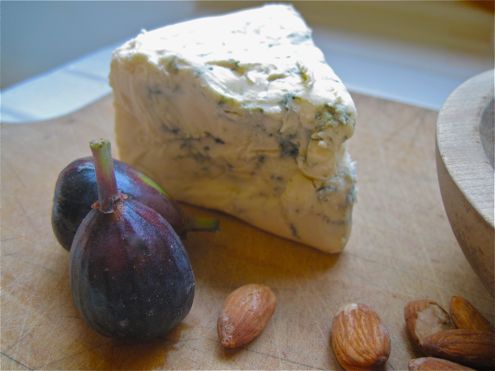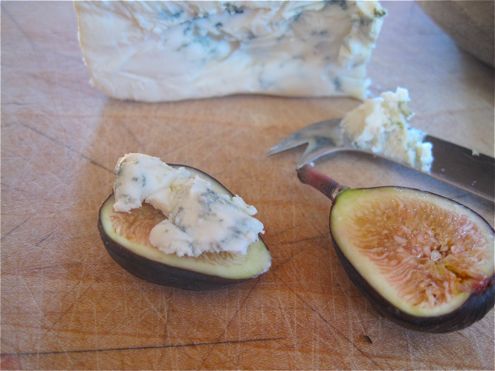 I’ve cleaned up my act. Asparagus, arugula, beets, lima beans, salmon, plain yogurt, walnuts, blueberries, raspberries and cantaloupe and a dearth of processed grains have shaped my daily menu. Instead of veering wildly from starving myself to voracious bingeing on pear and custard pastries or salt and pepper potato chips I’ve made sure to consume responsibly in a measured and thoughtful fashion. (Although I have to confess, I was occasionally saved from some very poor choices by a square of dark chocolate.)
I’ve cleaned up my act. Asparagus, arugula, beets, lima beans, salmon, plain yogurt, walnuts, blueberries, raspberries and cantaloupe and a dearth of processed grains have shaped my daily menu. Instead of veering wildly from starving myself to voracious bingeing on pear and custard pastries or salt and pepper potato chips I’ve made sure to consume responsibly in a measured and thoughtful fashion. (Although I have to confess, I was occasionally saved from some very poor choices by a square of dark chocolate.)
Then over the weekend I read this article by Mark Bittman. And I watched his little video and became obsessed. As you know, I am a slave to a rustic soup and this one was full of pork fat, cheese and olive oil. I know it’s not possible to detox on all that animal protein and fat, but is it possible to eat this kind of food in the midst of a detox and still be committed to detoxing?! For me, the metric has to be based on how delicious and flavorful the food is – which is a very personal way to measure! It seemed crazy to even try this soup, but…I just had to! Even the most thoughtfully prepared detox food can quickly become very boring!
In Mr. de Carlo’s “Bone Soup” there is a side of baby back pork ribs (it could have been any piece of meat with a large bone but the pork neck the butcher had was frozen in a solid lump and I wasn’t willing to wait for it to thaw). There is a lot of olive oil, not only in the soup, but on the soup and also gilding the deftly salted croutons which garnish the soup with bright raggedly torn leaves of basil. And how about the two big handfuls of parmesan cheese, in the soup – adding body and complex, savory, tang – and then even more thrown over the soup for good measure? This is what Mr. Bittman has to say about it:
But it’s worth pointing out, I think, that the soup is neither a fat-bomb (I wouldn’t be surprised if it has fewer calories than Olga’s) nor one that lacks complexity.
I am still trying to figure out how this soup is not a “fat-bomb”…
Olga’s method, as described by Mr. Bittman, is strikingly similar to this recipe I love from Alice Waters, which if you can refrain from adding cheese, is actually vegan. It’s very very healthy. And Mark Bittman says that this might have fewer calories than a vegetable soup made with water and olive oil…Hmmm.
I can’t wrap my head around it. Oh well. I will just trust Mark Bittman!
I felt compelled to make this soup as soon as I read the recipe and I would hate not to try something so clearly marvelous because of some silly detox “rules”. This is how to think about it: Bone Soup is a little vacation from the Detox. And like a really good vacation it will be revivifying, meditative, transporting and totally necessary. It is an entirely different sort of health transgression from pastry and potato chips. The thing is, you can eat pretty much whatever you want on a diet if you set seriously high standards – this means only eat food that is truly delicious. Since Bone Soup takes five hours from start to finish there is no danger of eating that way everyday. I wouldn’t want to. Who would?! It’s too rich. It’s a maybe once a week vacation from the berries, melons, lettuces, yogurt and fish that I usually eat.
Save this complex and warming soup for a cold day. Like yesterday.
Bone and Black Chickpea Soup
slightly adapted from Frank de Carlo’s Black Chickpea Soup
- 1 cup black dried chickpeas, soaked over night and then drained (next time I’m going with the yellow chickpeas, black chickpeas are good but much more firm than the yellow)
- 3 tbsp olive oil + more for the croutons
- 1 pound baby back pork ribs
- 1 red onion, diced
- 1 carrot diced
- 2 stalks celery
- 1 14 ounce can peeled plum tomatoes, drained if very liquid and chopped
- a bay leaf
- a few sprigs of thyme
- 1/2 cup white wine
- 1 pound rustic bread cut or torn in 1 1/2″ chunks
- 1 cup chard leaves, washed and roughly shredded
- 2 eggs
- coarsely grated parmesan – about 3 cups
- fresh basil leaves, washed, dried and torn into large pieces
- Over a medium flame, heat 3 tbsp olive oil in a 7 quart heavy stock pot or Dutch oven. While the oil is heating, lightly season the meat with sea salt and freshly ground black pepper. When the oil is shimmering, start browning the meat. There should be a distinct sizzle but no smoke. If you happen to burn the fond (the delicious brown crispy stuff on the bottom of the pot, be sure to wipe it off before you continue to the next step or your soup will taste acrid.) The meat should be deeply browned on both sides but not burnt.
- After the meat is brown, add the tomatoes, bay, thyme sprigs, drained chickpeas, wine and enough water to cover everything by an inch. Cover the pot and bring the soup to a simmer over medium high heat. Then turn the heat to low, with the lid half way off. You can simmer for 3 – 5 hours.
- While the soup is simmering, take a moment to make the croutons. Heat the oven to 325. Toss the bread cubes in a bowl with some olive oil, 3 or 4 tablespoons and a pinch of sea salt. Bake on a rimmed baking sheet for about 10 minutes or until they are golden and crisp. Remove and set aside until ready to serve.
- When both the meat and the beans are fully cooked and tender, remove the meat to a cutting board and when it has cooled slightly, shred the meat and discard the bones, fat and gristle. Add the shredded meat back to the pot.
- Beat the two eggs together in a small bowl and then whisk into the soup. Whisk in 2 cups of the parmesan, and swirl in a little more olive oil
- To serve, ladle the soup into a wide soup plate or bowl. Garnish each with a few large croutons, another drizzle of olive oil, a sprinkling of parmesan cheese and several torn basil leaves.

























